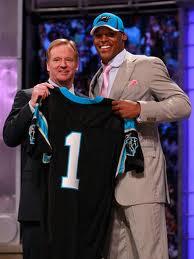 It’s almost time for the 2012 NFL Draft, and I thoroughly enjoy the many quantitative aspects of this event. The NFL Draft offers a complicated optimization problem with 32 actors all trying to maximize their gains.
It’s almost time for the 2012 NFL Draft, and I thoroughly enjoy the many quantitative aspects of this event. The NFL Draft offers a complicated optimization problem with 32 actors all trying to maximize their gains.
To begin, teams and scouts evaluate the draft-eligible players and attempt to quantify their value. In doing so, they consider not just the player’s skill and athletic ability, but also the importance of the position. For example, generally speaking a left tackle is seen as providing more long-term value than, say, a cornerback.
But quantifying player value is just one part of a complicated equation. Teams need to balance player value with team need; if the best player available doesn’t fit with what the team needs, selecting that particular player may not be the best use of that pick. However, if that player is coveted by others, the team can try to extract more value by trading the pick for other picks or assets.
In order to facilitate deals, a trade value chart exists which allows teams to compare the values of different picks in the draft, almost like a currency conversion chart. It is interesting that the perceived value of picks seems to decline exponentially. And as teams package picks to move up in the draft, they may end up paying more than market value.
Further complicating matters is how player contracts play an increasing role in draft evaluation. Highly drafted players earn large guaranteed salaries, but certain positions may not be seen as worthy of such payouts. Would $10 million be better spent on an above average lineman, or an outstanding safety?
There’s a lot of math in the NFL draft, so if you like football and mathematics, sit back and enjoy! We’ve already got one great question to keep an eye on this season: will Robert Griffin III prove to be worth the high price the Redskins paid to draft him?
Related Posts
 My latest contribution to the New York Times Learning Network is a collection of activities for having some summer fun with math!
My latest contribution to the New York Times Learning Network is a collection of activities for having some summer fun with math!

